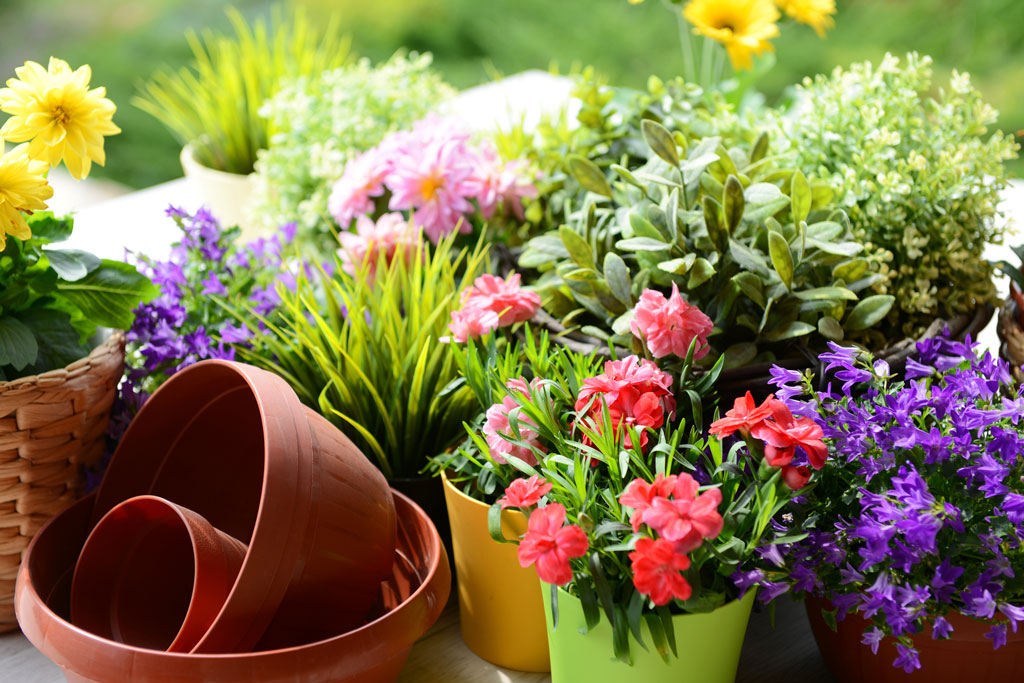
Learn the rules of organic gardening and farming below.
This is wisdom from Malcolm Beck, who is responsible for us entering into organic garden practices:
[image id="23316" title="Luedecke" linkto="file" ] Bill Luedecke and daughter Martelle offer advice to Highland Lakes gardeners.“After a lifetime of studying nature, and finally learning to farm and garden in tune with the natural laws, I have come to the conclusion that there are rules to follow that will make our plants grow abundantly, free of troublesome insects and disease, be more nutritious and even taste better.
1. Always use the best-adapted varieties for each environment.
2. Plant in the preferred season.
3. Balance the mineral content of the soil.
4. Build and maintain the organic content (Humus) of the soil.
5. Do nothing to harm the beneficial soil life.
6. Consider troublesome insects and diseases as symptoms of one of the above rules being violated.
7. Have patience. Mother Nature gives birth, but Father Time controls the cycles.”
Now you see why we were so impressed by this man and his philosophy of life and gardening. Sure makes sense, doesn’t it?
SOIL TESTING
For those of us with a new plot covered in plastic, we’ll test our soil after the plastic has been removed. The soil ingredients and pH level will be different in a month. For those of y’all who do not have plastic covering your garden to kill the weeds, now is a great time to test your soil.
“Test now and be ready for planting and spring production.”
CLICK HERE for information and downloads to send your soil sample to the lab. If you are a fan of Wade Hibler’s show on KBEY 103.9 FM Radio Picayune, as we are, this is the same website he has mentioned.
Why should you have your soil tested? Knowing the present profile of your soil gives you a baseline. It’s important to know in which direction your soil needs adjusting. Is your pH level high, 7, or low? If your pH level is too high or low, your plants will not be able to absorb the nutrients that you are feeding them. We certainly don’t want to waste money and nutrients. Secondly, as we have mentioned previously, primary macronutrients that are essential for healthy plants are nitrogen (N), phosphorous (P), and potassium (K). The ratio of NPK is important. (Side note: When coffee decomposes, it releases these three nutrients.)
THE GREAT BACKYARD BIRD COUNT
Cornell Lab of Ornithology and National Audubon Society have teamed up for the Great Backyard Bird Count this year. The GBBC is Feb. 16-19. People of all ages can join in the fun counting birds anywhere — your backyard, the lake, the park, and front yards, too!
NEW ADVENTURE
With the winds blowing, we discovered that the 2- to 4-millimeter clear plastic would also make a great kite. We ended up having to place cinder blocks and a turned-over wheelbarrel on the plastic to combat the high winds. If your plastic is blown off, don’t fret. Re-secure it so it is as flat on the ground as possible.
FEBRUARY GARDEN DUTIES
1. Have you put out your onion sets?
2. Plant your potatoes mid-month, between the Presidents’ Days. Potatoes come in so many colors and flavors these days; you can plant white, red, purple, orange, or brown. It certainly makes for a colorful table setting at suppertime.
3. Lawn care for this month is to spray Medina soil activator and (for the first part of the month) top dress your lawn with compost.
4. Keep those flowerbeds and garden plots free from trash and debris. If you are clearing cedar from your place, please chip the trees and put them back on your soil as mulch instead of burning them. Make sure your tree chip mulch is several inches thick to prevent little trees sprouting up in your flower garden. (Learned that one the hard way.)
5. Order and apply corn gluten to your moist lawns. This is a natural “weed and feed” and does wonders for removing grass burs from your lawn. Do not apply corn gluten to your vegetable or flower gardens. Corn gluten is a broadleaf inhibitor. Vegetable and flower seeds will not come up where corn gluten has been applied, which is the reason we use it as a weed-and-feed application. Corn gluten also has about 10 percent nitrogen and is excellent all year long as a lawn fertilizer. Apply corn gluten with a fertilizer spreader at the rate of 20 pounds per 1,000 square feet of lawn.
6. Start tomato and pepper seeds indoors. Plant vegetable plants: artichoke and asparagus crowns, broccoli, cabbage, chard, collards, lettuce, mustard greens, onion sets, and spinach. Get the idea? All the cool-weather veggies.
7. Plant all the hardy perennial herbs such as chives, oregano, and thyme as well as cool-weather annuals or biennials such as dill, fennel, and parsley.
8. Plant fruit trees, grapes, and berries. The nurseries have such an awesome selection.
We’ve been literally drooling over the garden catalogs! Have you made your choices?
Keep your souls and soles in your garden!
Remember the True Master Gardener: Jesus said, “I am the vine; my Father is the Gardener.” John 15:1
Contact Bill Luedecke at The Luedecke Group Realtors at (512) 577-1463 or email him at bill@texasland.net. Contact Martelle Luedecke at (512) 769-3179 or luedeckephotography@gmail.com.









